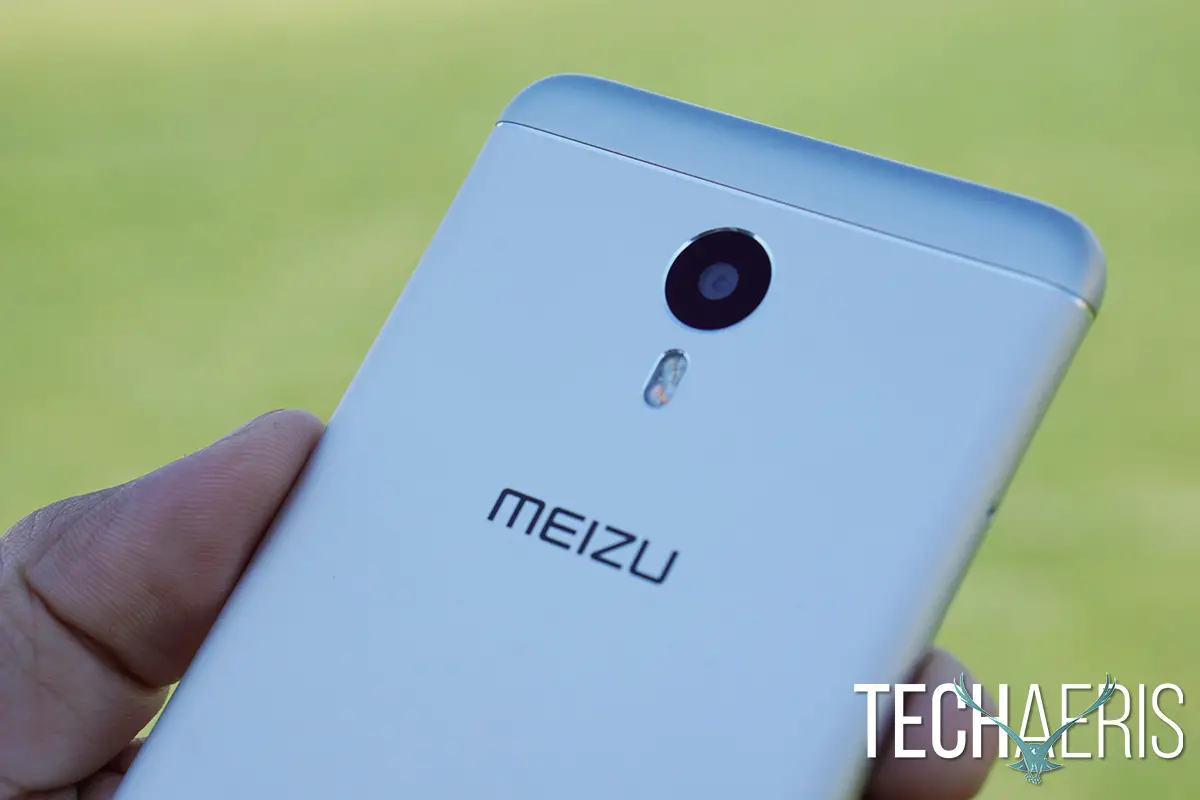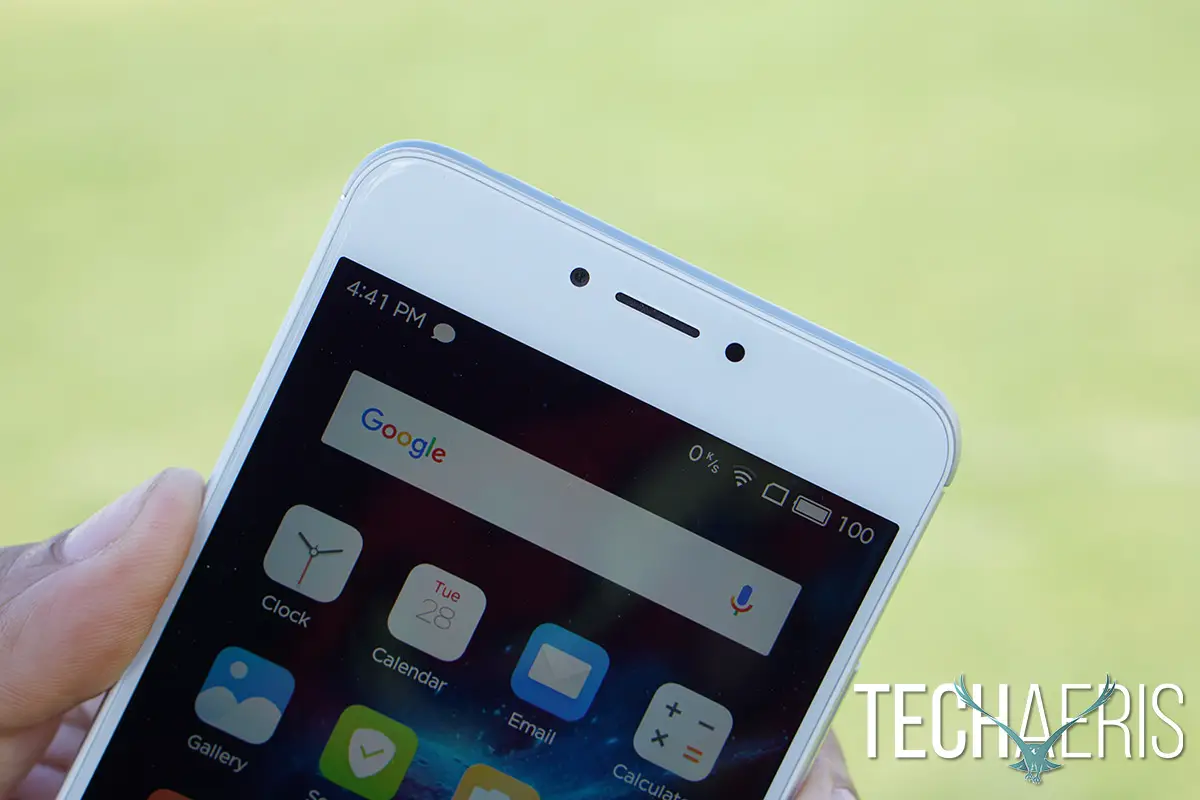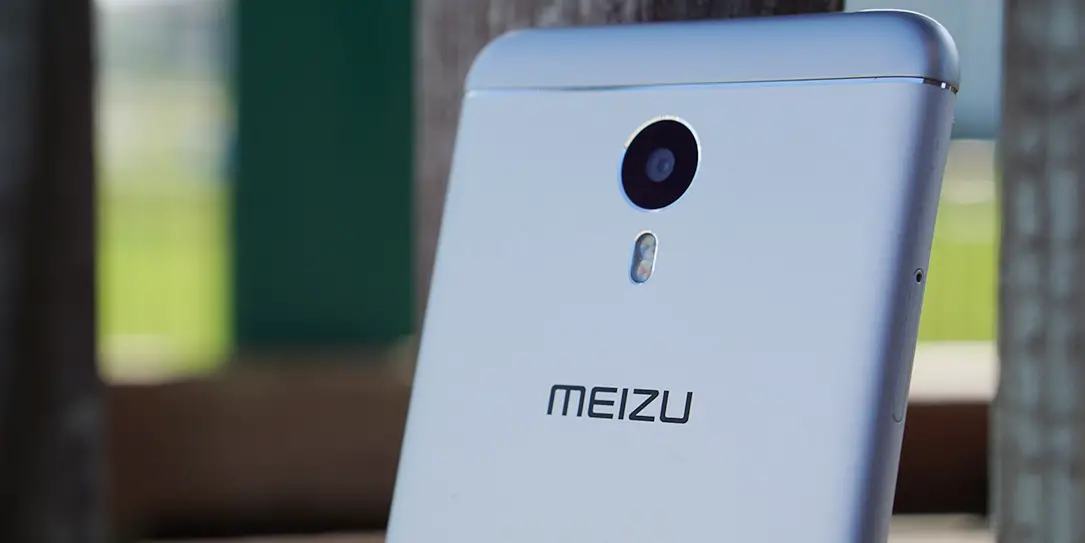
Meizu isn’t a phone maker you hear about much in the United States, but our overseas readers in India, the EU, and other parts will be very familiar with them. Meizu sent us their latest “Note” model, the Meizu M3 Note, for review. Let me say this before we dive into things. The Meizu M3 Note isn’t a phone made to exactly work perfectly in the United States. Because of that, I’d say this review is going to be more for our overseas readers. You can certainly acquire the device for use here in the States, but 4G LTE may not work as reliably as other mainstream U.S. smartphones. So keep reading for our full Meizu M3 Note review!
Design
Meizu, along with other Chinese smartphone makers, tends to borrow some of their design language from Apple’s iPhone. Although, at least one of those Chinese smartphone makers is suing Apple for allegedly stealing the iPhone design from them. The Meizu M3 Note certainly looks strikingly similar to the iPhone 6s Plus, and that’s not a bad thing. The footprint is nearly identical with the M3 Note coming in slightly shorter, which is even better since I’ve always thought the iPhone 6s Plus was too tall. The bottom line is, if people aren’t looking too closely, they will mistake this for an iPhone.
That being said. The front of the Meizu M3 Note houses a 5.5″ full 1080p HD display with 403ppi and 1000:1 contrast ratio. Protecting that LTPS panel is T2X-1 Glass GFF scheme (full lamination). At the top you’ll find the ear piece, proximity sensor 5 megapixel camera with ƒ/2.0 aperture and 4 element lens. At the bottom of the screen is the home button/fingerprint sensor.
Around the right side of the Meizu M3 Note you’ll find the power button and volume rocker. Around the left side is the SIM/microSD card slot. At the top is the noise canceling microphone and the top mounted 3.5mm headphone jack and I hate top mounted headphone jacks. At the bottom you’ll find the speaker grill (it looks like two but there’s only one speaker), microphone and microUSB charging port.
Around back is the two-tone flash along with the 13 megapixel camera with ƒ/2.2 aperture, 5 element lens and PDAF auto-focus. The antenna bands are also around the back, just like the iPhone 6s Plus except shinier. Finally there is the Meizu branding which is subtle and nicely done. The design isn’t groundbreaking and it copies some of the iPhone’s elements, but that doesn’t make it bad, it just makes it familiar.
Display
The 5.5″ full 1080p HD display has an impressive 403ppi and 1000:1 contrast ratio. The screen is vibrant and rich in color and the blacks are acceptable though not as deep as flagship devices like the HTC 10. I found consuming content on the Meizu M3 Note to be enjoyable and a very good experience. Watching movies, YouTube videos and playing games was a pleasure and the 1080p display is more than sufficient for non-pixel peeping users.
The LTPS panel (Low Temperature PolySilicon LCD) is protected by T2X-1 Glass and it seems to do a good job of protection. I did notice that the glass picked up fingerprints much faster and a lot easier than Gorilla Glass 4. Certainly not a deal breaker but something to be aware of.
Outdoor visibility at full brightness was OK, but it wasn’t stellar. I found myself having to find a shady spot on occasion to see the content on the screen. But at the $169.99 price, you really couldn’t ask for much more. Throwing in a more expensive panel and more expensive Gorilla Glass would increase the price and this LTPS panel and T2X-1 Glass does a good enough job for the majority of users. Overall this display is acceptable at the price point of the device.
Software/Ecosystem
The Meizu M3 Note comes with Android 5.1 with Meizu’s Flyme OS 5 on top. While it doesn’t ship with the latest Android 6.0, Android 5.1 is still more than capable and runs nice and smooth on the M3 Note. We’re not exactly sure why Meizu isn’t running Android 6.0 on one of their newest phones, but it likely has to do with Flyme OS 5. There’s a lot going on with Flyme OS 5 and it’s likely going to take some time to make sure Android 6.0 and Flyme OS 5 work bug free together.
I think most of us are familiar with Android 5.1, however, most of us in the U.S. aren’t as familiar with Flyme OS 5. As with most Chinese smartphone makers, Meizu’s custom skin (Flyme OS) is aesthetically influenced by iOS and adopts the no app drawer model. If you’ve ever used an iPhone you’ll find Flyme OS 5 familiar. Flame OS 5 offers a lot of customization in terms of skins, icons and wallpapers. If you decide to use an alternate launcher you won’t benefit from those customizations.
Flame OS has a built in file explorer that’s a nice touch, although you won’t get root explorer. Flyme also builds in performance apps that are designed to clean up old files that could be burdening the phone. Meizu also does its best with Flyme to optimize the system with other apps. There is probably some debate whether or not these types of apps do any good or not. However you see it, Flyme OS isn’t a bad user experience at all. It works nice and the customization out of the box is decent. If you want to use custom icon packs and the like, you’ll need a custom launcher.
One last thing to mention is the home button/fingerprint sensor. This is where you’ll be doing most everything. There are no capacitive back buttons or recent apps buttons. To go back in an app you tap the home button, don’t press, pressing will exit the app. It takes some getting used to and it would probably be more annoying to a U.S. user than our overseas readers. This is not a deal breaker in the least.
Performance
As with most phones from China the Meizu M3 Note is running a MediaTek processor. In this case it’s the Helio P10 octa-core processor, ARM® Cortex®-A53™1.8GHz x4 + ARM® Cortex®-A53™ 1.0GHz x4, ARM Mali T860 image processor with either 2GB/3GB LPDDR3 memory. Storage capacity is 16/32GB with expandable storage and this thing has a 4,100 mAh battery (our SpecOut sheet above is incorrect).
MediaTek processors have gotten a lot of flack over the years but they’ve really improved in just the past few months. The BLU Vivo 5 I reviewed a few months ago ran a MediaTek processor and I was impressed with it. The story is the same here with the Helio P10. I had no issues with performance with this phone. Everything felt smooth. Scrolling was snappy and lag free and apps launched without a hitch.
Consuming streaming content was great and the colors on the screen were represented fairly accurately. Playing games was fun and lag free for the most part. Playing heavier games like Asphalt 8 did make the phone a little warm and there were some frame drops but nothing unbearable. Things moved well on the Meizu M3 Note even with the MediaTek on board. While you can tell the differences between the higher end Snapdragon chips, performance was more than acceptable from the MediaTek given the price point of this phone.
Overall I was more than satisfied with the performance experience of this phone.
Speakers/Sound
The speaker is at the bottom of this phone much like the Apple iPhone 6s Plus. As with most bottom mounted speakers, you will suffer muffling issues when putting your hand at the bottom. Usually cupping your hand solves the problem for any bottom mounted speaker. The sound here is decent, nothing mind blowing but also not the worst speaker I’ve heard on a phone. Let’s face it, most speakers on smartphones, let alone cheaper smartphones, aren’t great. The sound on the Meizu M3 Note is above average given the price point. Plugging headphones into this device yields rich wonderful sound (depending on your headphones) and using headphones is probably better anyway.
Camera
Camera performance is again, decent and above average for the price point. As with most smartphones, sunlight and well lit performance is great. Colors are well represented and there is little to no noise. The camera even does well in moderate light (overcast days, interior lit situations) again exhibiting very little noise. Low light we do end up getting more noise and less detail but that is to be expected from this price point.
The Meizu M3 Note does give you granular controls over the standard auto mode. So if you want deeper control of your shots you can certainly take advantage of those controls. Shutter response was excellent and focusing was quick and accurate. Overall, for the price of this phone, you’re getting a really above average shooter in the back.
The front facing camera is decent but isn’t the most stellar camera in the world. I wouldn’t take selfies in low light. You’ll get the best results in a well lit area with the front camera.
Reception/Call Quality
Call quality is absolutely amazing on the Meizu M3 Note. I was actually pretty shocked at how crystal clear the calls sounded and the earpiece was more than loud enough. Reception on T-Mobile was excellent although I only got 3G most of the time. Speaker phone worked really well and both the caller and myself never had issues understanding or hearing each other.
The one thing buyers in the U.S. should be aware of though, this phone will mostly work on 3G and HSPA+. While it has LTE bands, most are not supported here in the U.S. I could get LTE in certain areas but it was weak and spotty at best. This is probably not going to be the case in countries like India where this phone is more likely going to sell.
The lack of LTE here in the States isn’t a ding at all against the Meizu M3 Note. After all, it is designed for non-U.S. use. Overall the reception and call quality was really impressive.
Battery Life
Massive battery! 4100 mAh beast of a battery! That huge battery got me through a full day without any issue. With other phones I’m usually sitting at 15-30% left in the tank. The Meizu M3 Note never got below 40% at the end of my day and for me that is excellent. I run all my phones with full brightness, Wi-Fi on, Bluetooth on, GPS on and about 4-6 hours screen on time. Battery life is not lacking at all here and you can probably get even more life out of it running a different configuration than what I run.
Price/Value
The Meizu M3 Note is going to set you back $169.99 in U.S dollars. Prices will vary from country to country but are all in the same ballpark. I would consider this price point a budget phone price and you’re really getting a midrange phone here. The price/value is one of the best on the market now and this device is worth it.
Wrap Up
The Meizu M3 Note probably isn’t for U.S. users, the lack of LTE compatibility would be an issue here. But for our overseas readers who are searching for an almost budget priced phone with strong midrange specs and performance. The Meizu M3 Note is a winner.
[button link=”http://www.meizuworld.com/meizu-m3-note-cellphone.html?utm_source=viz&utm_medium=viz.referral&utm_campaign=viz.ref.770&utm_viz_id=2jc88ZR3SQt&utm_pubreferrer=www.graphiq.com%2Fwidgets%2Fplugin%2Fsearch” icon=”fa-shopping-cart” side=”left” target=”blank” color=”285b5e” textcolor=”ffffff”]Purchase from Meizu[/button]*We were sent a review sample of the Meizu M3 Note for the purposes of this review.
Last Updated on February 21, 2020.





























Comments are closed.